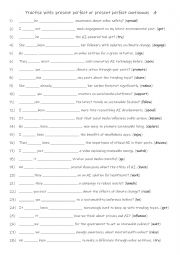
|
A2+-B1 Practise with present perfect or present perfect continuous 4
First Students familiarise themselves with the 2 tenses and their use. Then they read the sentences to work out which one is needed to complete the gap-fill using the infinitive in (). Each tense is used 14 times! Answers on page 2
Level: elementary
Age: 9-100
Type:
Downloads: 126
|
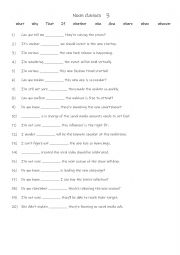
|
A1-A2 Noun clauses 3
Students complete the gap-fill with the correct word. Each word is used 2 times! Answers on page 2.
Level: elementary
Age: 7-100
Type:
Downloads: 126
|

|
Present simple passive voice 4
Learning the present simple passive voice helps students focus on the action or the recipient, rather than the doer. It�s useful when the doer is unknown, unimportant, or to emphasize the object. Mastering this structure improves clarity, variety in sentence construction, and is essential for formal or academic communication. Students complete the ...
Level: elementary
Age: 9-100
Type:
Downloads: 126
|
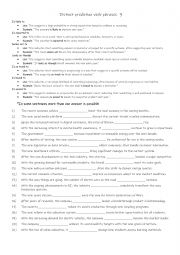
|
A2+-B1 Distinct prediction verb phrases 3
These phrases help express different levels of certainty about future events. "Is likely to" suggests something will probably happen based on evidence, while "is expected to" refers to something predicted or planned. "Seems set to" indicates something is prepared to happen soon, and "looks as though" is used when something seems probable based on c...
Level: elementary
Age: 10-100
Type:
Downloads: 126
|
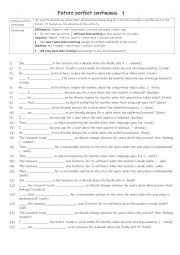
|
B1+-B2 Future perfect continuous 6
Students should learn the future perfect continuous because it enables them to express actions that will have been ongoing for a specific duration before a certain point in the future. This tense is particularly useful for discussing long-term plans or commitments (e.g., By next year, she will have been working here for a decade) and for highlighti...
Level: intermediate
Age: 11-100
Type:
Downloads: 126
|
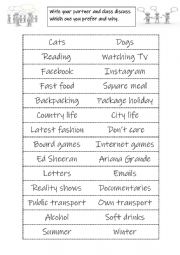
|
Preferences
This worksheet is suitable for A1-B1 students.I made it specifically for younger students (teenagers) who have different interests. Suitable for pairwork/ groups or individual.
Level: elementary
Age: 12-100
Type: worksheet
Downloads: 125
|
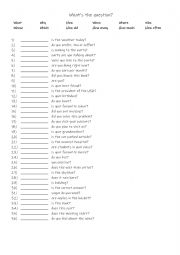
|
What�s the question
Students complete the questions with a suitable question word. Answers are on page 2
Level: elementary
Age: 10-100
Type:
Downloads: 125
|
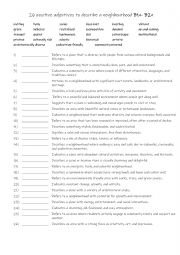
|
Positive adjectives to describe a neighbourhood B1+- B2+
26 positive adjectives to describe a neighbourhood B2-C1. Students read the definitons and choose from a list of adjectives in bold. Answers on page 2 After checking the answers, students in pairs or small groups use some of the adjectives to describe their neighbourhood.
Level: advanced
Age: 12-100
Type: worksheet
Downloads: 125
|
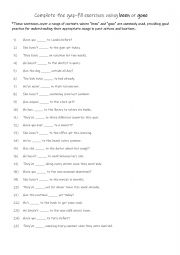
|
Been or gone?
Complete with either been or gone practise These sentences & questions cover various contexts where been and gone are used, providing needed practise for students to differentiate between the two.They cover a range of contexts where "been" and "gone" are commonly used, providing good practice for understanding their appropriate usage in past action...
Level: elementary
Age: 10-100
Type: worksheet
Downloads: 125
|
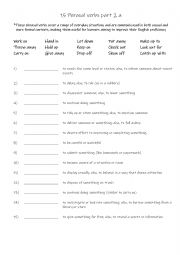
|
15 Phrasal verbs part 2 a worksheet
These phrasal verbs cover a range of everyday situations and are commonly used in both casual and more formal contexts, making them useful for learners aiming to improve their English proficiency; they are suitable for CEFR A2-B1 levels. Students match the phrasal verbs to their definitions. Answers on page 2. All of the phrasal verbs used in this ...
Level: elementary
Age: 10-100
Type:
Downloads: 125
|












